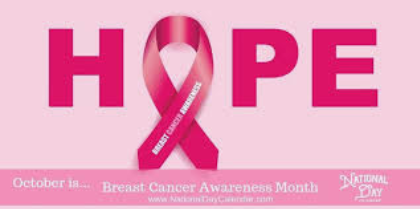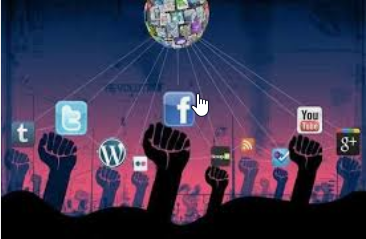
by Reginald | May 31, 2020 | SNHU Blogs
 Many of us communicate with our phones, tablets, computers, etc. on some type of social media platform today: Twitter, Facebook, LinkedIn, etc. However, there was another popular social media platform created by Google that people did not know or forgotten it existed several years ago. Orkut started in 2004, which around the same time when Facebook launched. At its peak, Orkut had 30 million people in its communities; however, Google decided to shut Orkut down in 2014 and replace it with Google+, which is a more robust platform that had many more online features, such as Google Hangouts. Even though the company shut down its social media platform, there are some valuable marketing lessons learned from its successful social media strategy before its demise.
Many of us communicate with our phones, tablets, computers, etc. on some type of social media platform today: Twitter, Facebook, LinkedIn, etc. However, there was another popular social media platform created by Google that people did not know or forgotten it existed several years ago. Orkut started in 2004, which around the same time when Facebook launched. At its peak, Orkut had 30 million people in its communities; however, Google decided to shut Orkut down in 2014 and replace it with Google+, which is a more robust platform that had many more online features, such as Google Hangouts. Even though the company shut down its social media platform, there are some valuable marketing lessons learned from its successful social media strategy before its demise.
Target Audience
One social media marketing lesson learned from Orkut’s success is its clear purpose and target audience. A successful social media strategy targets small niche audiences through diffusion and community social media messages. Moreover, every goal must identify the target audience populations (target, niche, individual). Orkut’s purpose was to give users the ability to find communities when they searched with keywords, such as titles, descriptions, and memberships. The social media platform was not popular in the United States; however, it was a huge success in Brazil and India. At that time, being part of a social networking site meant that a person was well connected in the technology domain because it was an invite-only membership.
Brazil’s Branded Social Experience
 Brazilians are fun-loving and sociable people. They spend an average of 3 hours and 40 minutes per day on social media, and the government invested heavily in the country’s internet connectivity, which improved the technology gap between the rich and poor. There are over 122 million people Brazilians on social media, which equates to 87.7% of the entire population. Moreover, 96% of Brazilians use their smartphones to communicate on social media platforms. Orkut used to be the most popular social media platform in Brazil; however, consumers were forced to change when it was shutdown. Google+ replaced Orkut, and some users moved to that social media platform; yet, WhatsApp became the most popular social media application on Brazilian smartphones because it was inexpensive for sending and receiving text messages.
Brazilians are fun-loving and sociable people. They spend an average of 3 hours and 40 minutes per day on social media, and the government invested heavily in the country’s internet connectivity, which improved the technology gap between the rich and poor. There are over 122 million people Brazilians on social media, which equates to 87.7% of the entire population. Moreover, 96% of Brazilians use their smartphones to communicate on social media platforms. Orkut used to be the most popular social media platform in Brazil; however, consumers were forced to change when it was shutdown. Google+ replaced Orkut, and some users moved to that social media platform; yet, WhatsApp became the most popular social media application on Brazilian smartphones because it was inexpensive for sending and receiving text messages.
 Since most Brazilians use smartphones to communicate, the social media landscape depicts a tremendous opportunity for brands to enter and gain ground in the market. Unlike Facebook, Twitter, and others, brands on WhatsApp speak directly to consumers; furthermore, 98% of WhatsApp messages are opened and read. Instead of purchasing advertisements on Facebook or Twitter, WhatsApp gives brands direct communications to consumers around the world. Therefore, new products, catalogs, sales, etc. are offered to consumers immediately, and they are likely to take some form of action. On the other hand, consumers can communicate directly to the brands and get customer support, or their questions answered.
Since most Brazilians use smartphones to communicate, the social media landscape depicts a tremendous opportunity for brands to enter and gain ground in the market. Unlike Facebook, Twitter, and others, brands on WhatsApp speak directly to consumers; furthermore, 98% of WhatsApp messages are opened and read. Instead of purchasing advertisements on Facebook or Twitter, WhatsApp gives brands direct communications to consumers around the world. Therefore, new products, catalogs, sales, etc. are offered to consumers immediately, and they are likely to take some form of action. On the other hand, consumers can communicate directly to the brands and get customer support, or their questions answered.
Brazilians are savvy spenders, and they are always looking for a good deal. The challenge for online retailers to gain market share in Brazil is that they must monitor and keep pace with price changes and offers by competitors. Even though Brazilians and brand loyalists, 19 percent shop around to find retailers selling the same brand at a lower price, 14 percent wait for sales, and 60% will not go back to the higher-priced brand if they switch to another. Therefore, online retailers must be keenly aware of the market conditions for their brands and, effectively, consistently have marketing campaigns to drive sales continuously.

Final Thought
Orkut established a social media foundation in markets like Brazil; however, the death of the social media platform was due to Google’s shift in its overall business strategy. Afterward, Orkut lacked the necessary resources to keep up with consumer demands for more features and capabilities. The creator of Orkut launched a new mobile social network called Hello. It is the first social media application designed to connect people that share the same passions and love anything. The social media platform opens an opportunity for brands to communicate with loyalist that are passionate about their products. Social media continue to evolve; therefore, it remains to be seen how brands use these platforms to communicate to consumers in the future creatively.

by Reginald | May 17, 2020 | SNHU Blogs

Founded in Shenzhen, China, in 1998, Tencent quickly grown to become one of the largest High-Tech companies in the world. The company developed Weixin, aka WeChat, which is the most popular messaging app in China with a user base of more than 1 billion people. The app is more than just a typical social media platform. It combines the functionalities of multiple platforms onto a single system: social networks, financial services, e-commerce, media entertainment, smartphone, taxi services, payment centers, and more.
History

The computing industry in China started slowly compared to the United States. According to CNBC International, in 1999, 50 out of 100 people owned a computer in the United States; whereas, one out of 100 people owned one in China. Therefore, internet cafes became popular for many young people in China because it was convenient and inexpensive. On the other hand, mobile cell phone technology snowballed in China, and by 2011 780 million users were using the QQ instant messenger app, which was similar to MSN’s instant messengers. At this time, Weixin emerged in the market as an alternative instant messenger and photo-sharing application. Both applications grew and added many features over the years that appealed to the Chinese market. The main difference between them is that the Weixin (WeChat) app expands into the international markets, while QQ is primarily for China and other Asian markets.
Additionally, the WeChat pragmatic app has features that focus on helping young people manage their daily lives, such as ordering food. At the same time, QQ is an entertainment portal for young Chinese people wanting literature, music, live streaming, anime, etc. In 2017, WeChat surpassed QQ for the first time, with 938 million monthly active users, while QQ saw a decline to 861 million active users.
Understanding the Market
 The rise of mobile technology is the foundation that gave the Weixin app the ability to connect millions of users in China and around the world. The marketers of the Weixin app understood the demographics of their audience that used mobile devices in their market, which were young, working people, and many had busy lifestyles that made their routines challenging to manage and complete. Weixin’s success is the result of understanding the audience’s needs and creating a platform that made their daily activities accessible and easy to maintain. For example, WeChat users can link the app to their Chinese bank account and make payments by scanning a unique barcode at a local merchant shop that accepts WeChat Pay. Many applications within the WeChat platform makes it the most popular social media service in China.
The rise of mobile technology is the foundation that gave the Weixin app the ability to connect millions of users in China and around the world. The marketers of the Weixin app understood the demographics of their audience that used mobile devices in their market, which were young, working people, and many had busy lifestyles that made their routines challenging to manage and complete. Weixin’s success is the result of understanding the audience’s needs and creating a platform that made their daily activities accessible and easy to maintain. For example, WeChat users can link the app to their Chinese bank account and make payments by scanning a unique barcode at a local merchant shop that accepts WeChat Pay. Many applications within the WeChat platform makes it the most popular social media service in China.
The Window of Opportunity

The WeChat social media applications open a window for marketers to access the China market. Since WeChat is focused on expanding its reach into the international communities, the app allows western marketers to offer products and services to its 930+ million social media users. More importantly, WeChat has a variety of users that have many different lifestyles: students, professionals, business owners, CEOs, etc. Therefore, western marketers can use WeChat marketing tools and mini-programs for B2C and B2B advertising, and non-Chinese brands no longer need a Chinese business license to create an account.
There are still some challenges to overcome using the WeChat app to access China’s market. WeChat guards their users’ stats and demographics carefully; however, Hootsuite collected some information that gives marketers basic knowledge of the Chinese market. Another critical marketing tool that helps with western marketers overcome some of the challenges is influencer marketing or WeChat’s Key Opinion Leaders (KOLS). There is no fixed rate for the partnership; however, using WeChat influencers can help brands enter new markets by sharing sponsored posts.
Final Thoughts
 The vision of the Weixin (WeChat) app created an innovative solution that helps people manage their daily routines and habits easier in China, and it opened a gateway for non-Chinese businesses to market their products and services. The key to Weixin’s success is the marketers’ keen understanding of the demographics and behavior of their targeted audience. Moreover, the advancement in mobile technology gave them the infrastructure to reach millions of users. Since WeChat is designed to be an international platform, the app opened a gateway for westerners and other non-Chinese businesses to market their products and services to the Chinese market. The success of Weixin compels marketers abroad to realize that their social media product needs to be a part of their audiences’ everyday routine and habit because it helps make behavior changes, whether it is purchasing decisions or a positive social change.
The vision of the Weixin (WeChat) app created an innovative solution that helps people manage their daily routines and habits easier in China, and it opened a gateway for non-Chinese businesses to market their products and services. The key to Weixin’s success is the marketers’ keen understanding of the demographics and behavior of their targeted audience. Moreover, the advancement in mobile technology gave them the infrastructure to reach millions of users. Since WeChat is designed to be an international platform, the app opened a gateway for westerners and other non-Chinese businesses to market their products and services to the Chinese market. The success of Weixin compels marketers abroad to realize that their social media product needs to be a part of their audiences’ everyday routine and habit because it helps make behavior changes, whether it is purchasing decisions or a positive social change.

by Reginald | May 2, 2020 | SNHU Blogs
 In general, humans do not like to see other humans succumbing to a disease, like cancer. Unlike world hunger, which can be resolved with the right amount of resources and environmental changes, there is no real cure for those suffering from cancer. Usually, body cells grow old or become damaged, die, and then new cells replace them. However, cancer develops when old, abnormal, or damaged cells survive, divide, and form growths called tumors, except diseases of the blood. These malignant tumors invade and destroy nearby tissues and can create severe pain or loss of life if there is no early treatment. Since there is no cure for this abnormal condition, people around the world established various organizations to make everyone aware of cancer and provide support to cancer patients. On the internet, social media sites, such as Facebook, started a cyberactivism, which is a form of social media mobilization to heighten the awareness of this disease.
In general, humans do not like to see other humans succumbing to a disease, like cancer. Unlike world hunger, which can be resolved with the right amount of resources and environmental changes, there is no real cure for those suffering from cancer. Usually, body cells grow old or become damaged, die, and then new cells replace them. However, cancer develops when old, abnormal, or damaged cells survive, divide, and form growths called tumors, except diseases of the blood. These malignant tumors invade and destroy nearby tissues and can create severe pain or loss of life if there is no early treatment. Since there is no cure for this abnormal condition, people around the world established various organizations to make everyone aware of cancer and provide support to cancer patients. On the internet, social media sites, such as Facebook, started a cyberactivism, which is a form of social media mobilization to heighten the awareness of this disease.
 Cyberactivism or internet activism uses internet-based socializing and communication techniques to develop, operate, and manage any type of activism. Most cyberactivism supports a cause or need, and its purpose is to initiate a citizen-based movement toward a specific goal or objective. The reason for its high popularity and virality is that people like the idea of others associating or supporting them with a charity or good cause. As I mentioned earlier, most people naturally want to do the right thing and help others because it makes them feel good that their actions make a positive difference in supporting a good cause. Even though cyberactivism spreads rapidly on the internet or social media platform, there is no real connection to any real-life mobilization. Unfortunately, calls for cyberactivism make little or no difference in the world.
Cyberactivism or internet activism uses internet-based socializing and communication techniques to develop, operate, and manage any type of activism. Most cyberactivism supports a cause or need, and its purpose is to initiate a citizen-based movement toward a specific goal or objective. The reason for its high popularity and virality is that people like the idea of others associating or supporting them with a charity or good cause. As I mentioned earlier, most people naturally want to do the right thing and help others because it makes them feel good that their actions make a positive difference in supporting a good cause. Even though cyberactivism spreads rapidly on the internet or social media platform, there is no real connection to any real-life mobilization. Unfortunately, calls for cyberactivism make little or no difference in the world.
 National Breast Cancer Awareness Month is celebrated in October by individuals, businesses, and many organizations around the world and popularized on social media giant Facebook. For instance, in 2010, someone sent a private message asking women to change their status to read their first name and the color of their bra (Janet, Purple). The idea of this fun activity was to raise awareness for breast cancer and confuse men when they read the women’s statuses.
National Breast Cancer Awareness Month is celebrated in October by individuals, businesses, and many organizations around the world and popularized on social media giant Facebook. For instance, in 2010, someone sent a private message asking women to change their status to read their first name and the color of their bra (Janet, Purple). The idea of this fun activity was to raise awareness for breast cancer and confuse men when they read the women’s statuses.
Another example of this fun activity was when the women changed their status to show “the numerical length of their hair and how long it takes to wash it (9″, 25 minutes).” It would have been interesting to see the statuses of women that have short or no hair at all. Again, the goal of this fun activity was to increase awareness about breast cancer and keep men guessing.
“Whether you are full-fledge Breast Cancer supporter or a shameless, sexually-charged horndog, this page is for you.” C. Albanesius
CNN reached out and to a Facebook female representative to understand what was behind the trend; however, it was unclear where or how the message started.
“It’s an ideal example of how an individual voice can be magnified to create awareness for a good cause and ignite action among millions by using a site like Facebook.” Malorie Lucich
Even though Facebook’s breast awareness cyberactivism reached many women around the world, the results from the campaign did little in creating a real-live social movement. The activities were fun for everyone, but there was no real substance supporting the cause. In 2010, the Susan G. Komen Foundation reported an increase in donations and contribution, but there was no evidence linking it to the breast awareness cyberactivism. The memes circulated the same time when Breast Awareness Month started in October.
 In conclusion, many people want to do the right thing and help those in need. The cyberactivism activities on Facebook show that people empathize with the pain and challenges cancer patients and their families face every day. The fun activities attracted a lot of attention and participation; however, it left out an essential fact about breast cancer. In 2020, the Breast Cancer Organization estimated that 2,620 men are expected to be diagnosed with breast cancer, and 520 men are expected to die from the disease. Even though less than 1 percent of breast cancer patients are men, the fact remains that this disease can happen to anyone at any time. More importantly, supporting a good cause is more than creating a cyberactivism. Supporting a good cause needs real-life people to contribute and participate in various activities that make a difference in the lives of those who are suffering.
In conclusion, many people want to do the right thing and help those in need. The cyberactivism activities on Facebook show that people empathize with the pain and challenges cancer patients and their families face every day. The fun activities attracted a lot of attention and participation; however, it left out an essential fact about breast cancer. In 2020, the Breast Cancer Organization estimated that 2,620 men are expected to be diagnosed with breast cancer, and 520 men are expected to die from the disease. Even though less than 1 percent of breast cancer patients are men, the fact remains that this disease can happen to anyone at any time. More importantly, supporting a good cause is more than creating a cyberactivism. Supporting a good cause needs real-life people to contribute and participate in various activities that make a difference in the lives of those who are suffering.

 Many of us communicate with our phones, tablets, computers, etc. on some type of social media platform today: Twitter, Facebook, LinkedIn, etc. However, there was another popular social media platform created by Google that people did not know or forgotten it existed several years ago. Orkut started in 2004, which around the same time when Facebook launched. At its peak, Orkut had 30 million people in its communities; however, Google decided to shut Orkut down in 2014 and replace it with Google+, which is a more robust platform that had many more online features, such as Google Hangouts. Even though the company shut down its social media platform, there are some valuable marketing lessons learned from its successful social media strategy before its demise.
Many of us communicate with our phones, tablets, computers, etc. on some type of social media platform today: Twitter, Facebook, LinkedIn, etc. However, there was another popular social media platform created by Google that people did not know or forgotten it existed several years ago. Orkut started in 2004, which around the same time when Facebook launched. At its peak, Orkut had 30 million people in its communities; however, Google decided to shut Orkut down in 2014 and replace it with Google+, which is a more robust platform that had many more online features, such as Google Hangouts. Even though the company shut down its social media platform, there are some valuable marketing lessons learned from its successful social media strategy before its demise. Brazilians are fun-loving and sociable people. They spend an average of 3 hours and 40 minutes per day on social media, and the government invested heavily in the country’s internet connectivity, which improved the technology gap between the rich and poor. There are over 122 million people Brazilians on social media, which equates to 87.7% of the entire population. Moreover, 96% of Brazilians use their smartphones to communicate on social media platforms. Orkut used to be the most popular social media platform in Brazil; however, consumers were forced to change when it was shutdown. Google+ replaced Orkut, and some users moved to that social media platform; yet, WhatsApp became the most popular social media application on Brazilian smartphones because it was inexpensive for sending and receiving text messages.
Brazilians are fun-loving and sociable people. They spend an average of 3 hours and 40 minutes per day on social media, and the government invested heavily in the country’s internet connectivity, which improved the technology gap between the rich and poor. There are over 122 million people Brazilians on social media, which equates to 87.7% of the entire population. Moreover, 96% of Brazilians use their smartphones to communicate on social media platforms. Orkut used to be the most popular social media platform in Brazil; however, consumers were forced to change when it was shutdown. Google+ replaced Orkut, and some users moved to that social media platform; yet, WhatsApp became the most popular social media application on Brazilian smartphones because it was inexpensive for sending and receiving text messages. Since most Brazilians use smartphones to communicate, the social media landscape depicts a tremendous opportunity for brands to enter and gain ground in the market. Unlike Facebook, Twitter, and others, brands on WhatsApp speak directly to consumers; furthermore, 98% of WhatsApp messages are opened and read. Instead of purchasing advertisements on Facebook or Twitter, WhatsApp gives brands direct communications to consumers around the world. Therefore, new products, catalogs, sales, etc. are offered to consumers immediately, and they are likely to take some form of action. On the other hand, consumers can communicate directly to the brands and get customer support, or their questions answered.
Since most Brazilians use smartphones to communicate, the social media landscape depicts a tremendous opportunity for brands to enter and gain ground in the market. Unlike Facebook, Twitter, and others, brands on WhatsApp speak directly to consumers; furthermore, 98% of WhatsApp messages are opened and read. Instead of purchasing advertisements on Facebook or Twitter, WhatsApp gives brands direct communications to consumers around the world. Therefore, new products, catalogs, sales, etc. are offered to consumers immediately, and they are likely to take some form of action. On the other hand, consumers can communicate directly to the brands and get customer support, or their questions answered.



 The rise of mobile technology is the foundation that gave the Weixin app the ability to connect millions of users in China and around the world. The marketers of the Weixin app understood the demographics of their audience that used mobile devices in their market, which were young, working people, and many had busy lifestyles that made their routines challenging to manage and complete. Weixin’s success is the result of understanding the audience’s needs and creating a platform that made their daily activities accessible and easy to maintain. For example, WeChat users can link the app to their Chinese bank account and make payments by scanning a unique barcode at a local merchant shop that accepts WeChat Pay. Many applications within the WeChat platform makes it the most popular social media service in China.
The rise of mobile technology is the foundation that gave the Weixin app the ability to connect millions of users in China and around the world. The marketers of the Weixin app understood the demographics of their audience that used mobile devices in their market, which were young, working people, and many had busy lifestyles that made their routines challenging to manage and complete. Weixin’s success is the result of understanding the audience’s needs and creating a platform that made their daily activities accessible and easy to maintain. For example, WeChat users can link the app to their Chinese bank account and make payments by scanning a unique barcode at a local merchant shop that accepts WeChat Pay. Many applications within the WeChat platform makes it the most popular social media service in China.
 The vision of the Weixin (WeChat) app created an innovative solution that helps people manage their daily routines and habits easier in China, and it opened a gateway for non-Chinese businesses to market their products and services. The key to Weixin’s success is the marketers’ keen understanding of the demographics and behavior of their targeted audience. Moreover, the advancement in mobile technology gave them the infrastructure to reach millions of users. Since WeChat is designed to be an international platform, the app opened a gateway for westerners and other non-Chinese businesses to market their products and services to the Chinese market. The success of Weixin compels marketers abroad to realize that their social media product needs to be a part of their audiences’ everyday routine and habit because it helps make behavior changes, whether it is purchasing decisions or a positive social change.
The vision of the Weixin (WeChat) app created an innovative solution that helps people manage their daily routines and habits easier in China, and it opened a gateway for non-Chinese businesses to market their products and services. The key to Weixin’s success is the marketers’ keen understanding of the demographics and behavior of their targeted audience. Moreover, the advancement in mobile technology gave them the infrastructure to reach millions of users. Since WeChat is designed to be an international platform, the app opened a gateway for westerners and other non-Chinese businesses to market their products and services to the Chinese market. The success of Weixin compels marketers abroad to realize that their social media product needs to be a part of their audiences’ everyday routine and habit because it helps make behavior changes, whether it is purchasing decisions or a positive social change.
 In general, humans do not like to see other humans succumbing to a disease, like cancer. Unlike world hunger, which can be resolved with the right amount of resources and environmental changes, there is no real cure for those suffering from cancer.
In general, humans do not like to see other humans succumbing to a disease, like cancer. Unlike world hunger, which can be resolved with the right amount of resources and environmental changes, there is no real cure for those suffering from cancer. 
 National Breast Cancer Awareness Month is celebrated in October by individuals, businesses, and many organizations around the world and popularized on social media giant Facebook. For instance, in 2010, someone sent a private message asking women to change their status to read their first name and the color of their bra (Janet, Purple). The idea of this
National Breast Cancer Awareness Month is celebrated in October by individuals, businesses, and many organizations around the world and popularized on social media giant Facebook. For instance, in 2010, someone sent a private message asking women to change their status to read their first name and the color of their bra (Janet, Purple). The idea of this  In conclusion, many people want to do the right thing and help those in need. The cyberactivism activities on Facebook show that people empathize with the pain and challenges cancer patients and their families face every day. The fun activities attracted a lot of attention and participation; however, it left out an essential fact about breast cancer. In 2020, the
In conclusion, many people want to do the right thing and help those in need. The cyberactivism activities on Facebook show that people empathize with the pain and challenges cancer patients and their families face every day. The fun activities attracted a lot of attention and participation; however, it left out an essential fact about breast cancer. In 2020, the 